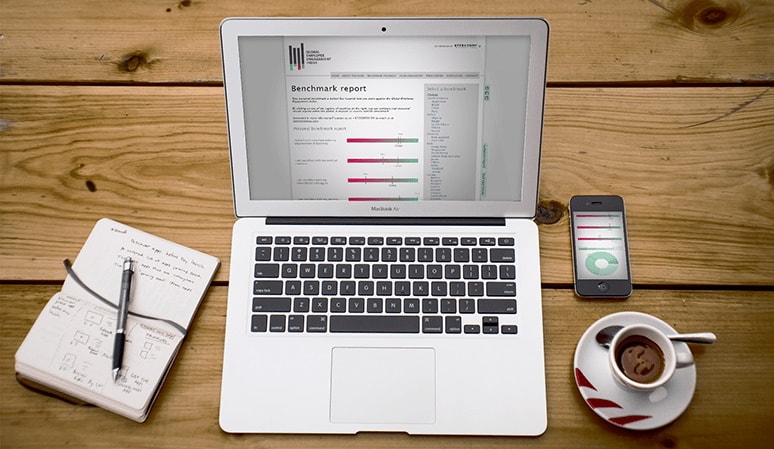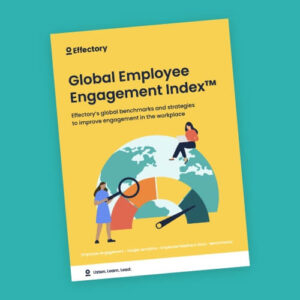Using the right benchmark in your employee survey is a vital step in creating the necessary data insights for action and impact.
What to choose when it comes to benchmark in surveying?

Benchmark in surveying
The idea of gaining insights by comparing one’s survey results against relevant data has been around for many years. Benchmarking still remains extremely popular, with employee survey and engagement survey providers commonly offering three types: industry, cultural and internal.
It can often be unclear which benchmark in surveying is the best fit for your survey goals and organisation. In order to help, we’ve evaluated each of the three options and further, we offer some constructive advice for HR professionals who are currently wondering which employee benchmarking they should use.
Global Employee Engagement Index™
Discover the Global Employee Engagement Index™ 2025 for key insights on driving employee engagement, improving performance, and enhancing team dynamics.
DownloadThe pros and cons of today’s employee survey benchmarking options
Industry benchmark
An industry benchmark’s added value lies in the fact that it allows companies to see how they compare against competitors. Organisations can see how they fair against the industry as a whole, and see if they are on par with industry standards. Detailed analysis can help highlight specific industry and workforce trends.
The major criticisms of industry benchmarks revolve around the composition of them. It is often useful to ask what is included in the benchmark and, which of your competitors are included. Considering the number of employee survey providers, the likelihood of having all major competitors in one benchmark is very small. Furthermore, the probability that a competitor’s questionnaire differs to yours is very high and as such, the benchmark in surveying won’t be 100% comparable.
What’s behind the trend to benchmark survey results internally?
Country benchmark
Country benchmarks act as a great reference point to see how each branch is doing compared to their countrymen and women. Further, it provides valuable information and insight into how a country generally perceives itself and what the nationwide scores are.
The benchmark is however, somewhat limited. It says very little about your organisation or industry and therefore may lack the necessary multiple insights that organisations desire.
Internal benchmark
Internal benchmarks are valuable because it allows organisations to focus on learning from internal processes and high performing teams. Furthermore, the option is practically easier as internal benchmarks do not rely on the number of clients that a survey provider has in a specific country or industry.
The major drawback of an internal benchmark is that there are limited options for the highest scoring and best performing teams. As such teams account for the top 5% of the benchmark, it is a challenge to find a similar benchmark for the teams to compare themselves to.
Beware when comparing yourself to global competitors
How to gather feedback from your employees
The definitive checklist for creating your employee engagement survey.
DownloadEmployee engagement survey benchmark data
When deciding which benchmark in surveying is the best to use, it’s valuable to ask two critical questions:
- What do you want to compare your employee survey or engagement survey scores to?
- How can you use the comparison to help your organisation reach the next level?
The most valuable results come when organisations think about exactly what they want to compare themselves to and why. Asking critical questions about the composition of benchmarks is always advantageous and relevant. Furthermore, thinking of what internal comparisons can the data be used to help achieve higher performance is an often overlooked but incredibly valuable aspect of successful surveys.
Book a free demo. See our solutions in action.
Effectory is Europe’s Leading provider of Employee Listening Solutions. Schedule a product demo and discover how to enhance your employees’ engagement.
Demo request

